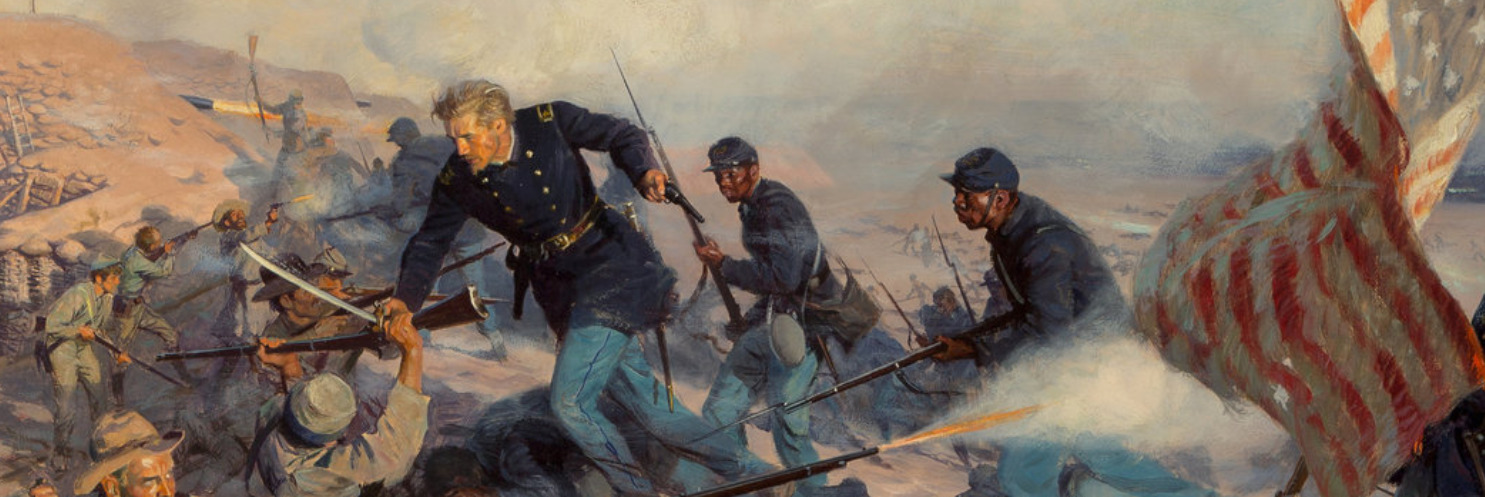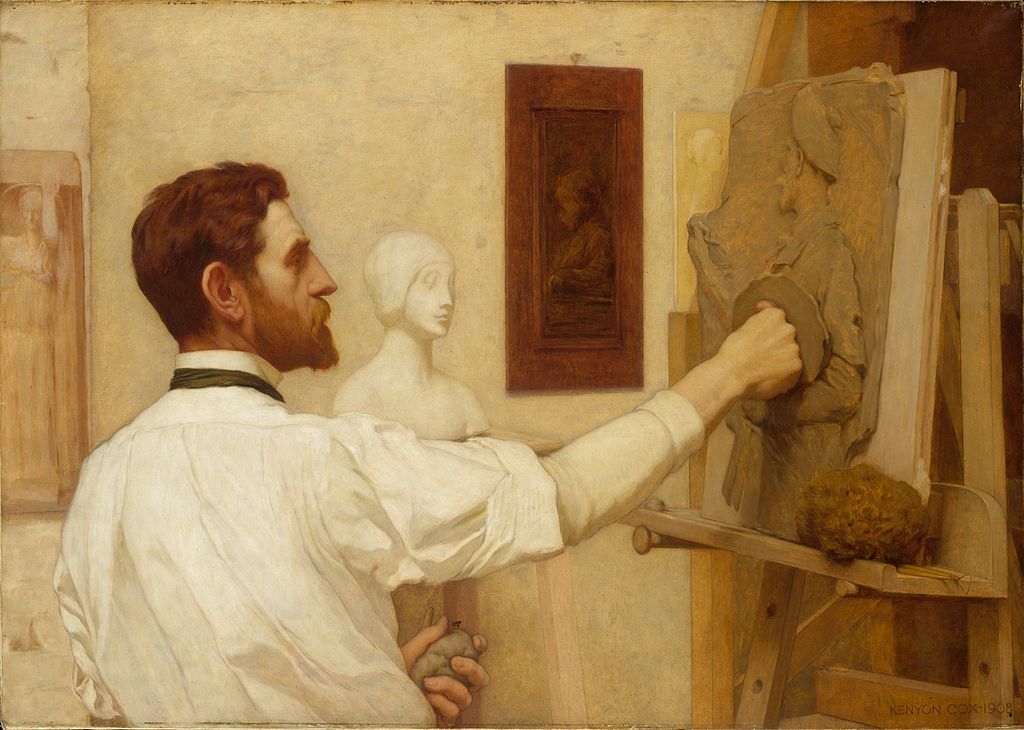
This cache is part of the Historic Boston GeoTour, a series of twelve caches that will take you through the city’s 400 years of history. One of the twelve is a bonus cache which will require you to also complete the Freedom Trail Adventure Labs. Completing the GeoTour will earn you 57 smileys, a Historic Boston GeoTour geocoin, and a Historic Boston digital souvenir.
The Robert Gould Shaw and Massachusetts 54th Regiment Memorial
This memorial commemorates one of the first African American regiments of the Civil War. Although African Americans served in both the Revolutionary War and the War of 1812, Northern racist sentiments kept African Americans from taking up arms for the United States in the early years of the Civil War. However, a clause in Abraham Lincoln’s 1863 Emancipation Proclamation allowed for the raising of Black regiments. Governor John Andrew soon created the Massachusetts 54th Volunteer Infantry. He chose Robert Gould Shaw, the son of wealthy abolitionists, to serve as its colonel. Notable abolitionists including Frederick Douglass and local leaders such as Lewis Hayden recruited men for the 54th Regiment. African American men enlisted from every region of the north, and from as far away as Canada and the Caribbean.

Above: Painting selection of Col. Shaw leading the 54th against Fort Wagner, moments before his death (artwork credit: Tom Lovell)
Through their heroic, yet tragic, assault on Fort Wagner, South Carolina on July 18 1863, in which Shaw and many of his men died, the 54th helped erode Northern public opposition to the use of Black soldiers and inspired the enlistment of more than 180,000 Black men into the United States forces. Sergeant William H. Carney, severely injured in the battle, saved the regiment’s flag. For this act of bravery, he became the first African American recipient of the Medal of Honor. The 54th Regiment also fought in engagements on James Island, the Battle of Olustee, and at Honey Hill, South Carolina before their return to Boston in September 1865.
 Augustus Saint-Gaudens took nearly fourteen years to complete this high-relief bronze monument, which celebrates the valor and sacrifices of the Massachusetts 54th. One of the premier artists of his day, Saint-Gaudens grew up in New York and Boston, but received formal training at the Ecole des Beaux-Arts Paris. In his studio in New York, he hired forty men to serve as models for the soldiers’ faces. Paid for by private donations and unveiled on May 31, 1897, this monument depicts the 54th Regiment as they marched down Beacon Street off for war in 1863.
Augustus Saint-Gaudens took nearly fourteen years to complete this high-relief bronze monument, which celebrates the valor and sacrifices of the Massachusetts 54th. One of the premier artists of his day, Saint-Gaudens grew up in New York and Boston, but received formal training at the Ecole des Beaux-Arts Paris. In his studio in New York, he hired forty men to serve as models for the soldiers’ faces. Paid for by private donations and unveiled on May 31, 1897, this monument depicts the 54th Regiment as they marched down Beacon Street off for war in 1863.
Right: portrait of Augustus Saint-Gaudens (artwork credit: Kenyon Cox)
Past & Present
Today, the memorial is part of the Boston African American National Historic Site, a collection of pre-Civil War structures sprinkled throughout Beacon Hill and connected by the 1.6-mile Black Heritage Trail, as well as along the also famous Freedom Trail. Stops along the Black Heritage Trail — many now private residences you can only view from the outside — include the 1807 Charles Street Meeting House, a formerly segregated church that went on to host speakers such as Frederick Douglass and Sojourner Truth; the 1824 Phillips School, one of Boston’s first integrated schools; and the residences of abolitionists, Underground Railroad conductors and Black militia leaders.
 While the Shaw and 54th Massachusetts Regiment Memorial has stood for more than a century, it’s still very much a living part of Boston history. The story it tells has been imortalized not just in stone, but also in recent memory, with many still remembering the acclaimed "Glory" film, which gives an account of Col. Shaw and the 54th. More recently, during the summer of 2020, when racial protests ignited debates about the role of monuments, some in the city and elsewhere questioned the memorial’s continued relevance. Other similar monuments and statues have been removed, yet this one remains, despite vandalism and other such controversy. L’Merchie Frazier, of the Museum of African American History (MAAH), says the monument should remain where it is.
While the Shaw and 54th Massachusetts Regiment Memorial has stood for more than a century, it’s still very much a living part of Boston history. The story it tells has been imortalized not just in stone, but also in recent memory, with many still remembering the acclaimed "Glory" film, which gives an account of Col. Shaw and the 54th. More recently, during the summer of 2020, when racial protests ignited debates about the role of monuments, some in the city and elsewhere questioned the memorial’s continued relevance. Other similar monuments and statues have been removed, yet this one remains, despite vandalism and other such controversy. L’Merchie Frazier, of the Museum of African American History (MAAH), says the monument should remain where it is.
Photo showing summer 2020 vandalism (artwork credit: facebook.com)
“It’s not enough to just see the piece. You have to go deeper,” she said. “There’s so much not told, but the monument is so moving that it can lead you to those things, if you’re curious.” One way you can go deeper is through a recently-created Augmented Reality experience for those at the memorial site. You can access it here with a mobile device: AR 54th Memorial.
Friends of the Public Garden also recently completed in early 2021 a $3 million restoration of the monument in partnership with the City of Boston, the MAAH and the National Park Service. As part of the overhaul, conservators spruced up the bronze relief in a studio in Woburn while stone conservators in nearby Lexington worked on the granite and marble base.

Above: Photograph showing the monument (source: boston.curbed.com)
Over the years, the monument has inspired composer Charles Ives’ orchestral work “Three Places in New England” (1911-1914) and Robert Lowell’s poem “For the Union Dead” (1964), and appeared in the end credits of Glory. The restoration ensures that Robert Gould Shaw and, perhaps more importantly, the groundbreaking Black soldiers of the Massachusetts 54th Regiment will stand as beacons of hope and heroism for generations to come.
Sources: edited from a number of sources, including nps.org, wbur.org, and as otherwise noted.
Logging Requirements:
To log this cache, please include one of the items below in your log (your choice):
- A photo of yourself or your GPS device with the monument
- (Optional) Discuss your opinion regarding the monument; why (or why not) keep it?
The photo must be your own, and taken on your log date, or you may have your log get deleted. Note that you do not need to message me with your photo / opinion - please just include / attach it to your log. Thank you for visiting!
Virtual Rewards 2.0 - 2019/2021
This Virtual Cache is part of a limited release of Virtuals created between June 4, 2019 and December 31, 2021. Only 4,000 cache owners were given the opportunity to hide a Virtual Cache. Learn more about Virtual Rewards 2.0 on the Geocaching Blog.
The Historic Boston GeoTour
